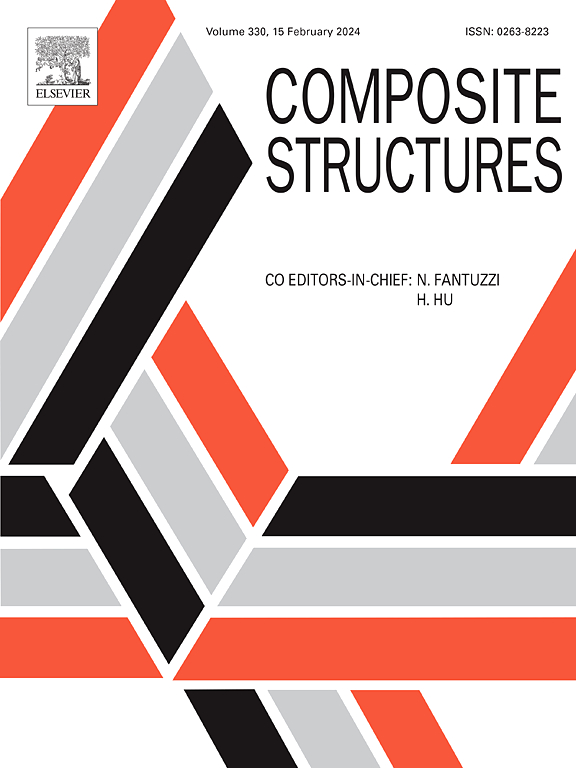双向功能梯度多孔板混合变量等几何集成材料优化
IF 7.1
2区 材料科学
Q1 MATERIALS SCIENCE, COMPOSITES
引用次数: 0
摘要
提出了一种基于混合变量的双向功能梯度多孔板材料分布综合优化方法。该方法将等几何分析与简单的一阶剪切变形理论相结合来分析板的力学行为。在优化设计问题中,以第一阶固有频率最大化为目标。设计变量包括描述陶瓷体积分数的二维NURBS控制点、孔隙率分布模式的选择类型和孔隙率系数。基于有限任意挠度约束优化,采用改进的PSO-GA混合算法作为求解器。若干数值算例验证了这种创新组合的有效性和适用性。该方法首次实现了二维fg多孔板离散孔隙度选择和连续材料参数设计的集成优化。本文章由计算机程序翻译,如有差异,请以英文原文为准。
Mixed-variable isogeometric integrated material optimization of bi-directional functionally graded porous plates
This paper proposes an integrated optimization methodology for the material distribution of bi-directional functionally graded (2D-FG) porous plates by mixed-variables. The methodology combines isogeometric analysis with simple first-order shear deformation theory to analyze the mechanical behavior of the plates. In the optimization design problem, the first natural frequency is maximized as the objective. The design variables include the control points of 2D NURBS describing the ceramic volume fraction, the selection type of the porosity distribution pattern, and the porosity coefficient. The optimization is constrained by limited arbitrary deflection, and an improved PSO-GA with hybrid algorithm is employed as the solver. Several numerical examples demonstrate the effectiveness and applicability of this innovative combination. This methodology is the first to achieve integrated optimization of discrete porosity selection and continuous material parameter design for 2D-FG porous plates.
求助全文
通过发布文献求助,成功后即可免费获取论文全文。
去求助
来源期刊

Composite Structures
工程技术-材料科学:复合
CiteScore
12.00
自引率
12.70%
发文量
1246
审稿时长
78 days
期刊介绍:
The past few decades have seen outstanding advances in the use of composite materials in structural applications. There can be little doubt that, within engineering circles, composites have revolutionised traditional design concepts and made possible an unparalleled range of new and exciting possibilities as viable materials for construction. Composite Structures, an International Journal, disseminates knowledge between users, manufacturers, designers and researchers involved in structures or structural components manufactured using composite materials.
The journal publishes papers which contribute to knowledge in the use of composite materials in engineering structures. Papers deal with design, research and development studies, experimental investigations, theoretical analysis and fabrication techniques relevant to the application of composites in load-bearing components for assemblies, ranging from individual components such as plates and shells to complete composite structures.
 求助内容:
求助内容: 应助结果提醒方式:
应助结果提醒方式:


